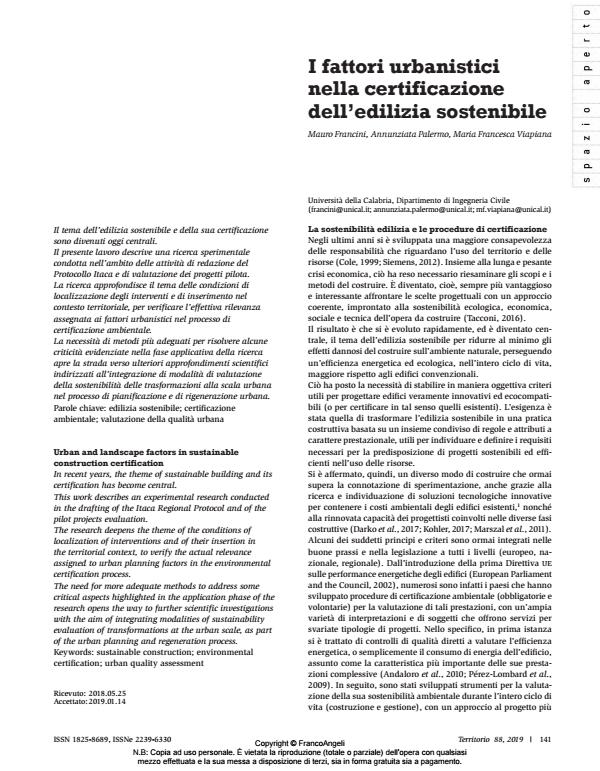I fattori urbanistici nella certificazione dell’edilizia sostenibile
Titolo Rivista TERRITORIO
Autori/Curatori Mauro Francini, Annunziata Palermo, Maria Francesca Viapiana
Anno di pubblicazione 2019 Fascicolo 2019/88
Lingua Italiano Numero pagine 8 P. 141-148 Dimensione file 373 KB
DOI 10.3280/TR2019-088020
Il DOI è il codice a barre della proprietà intellettuale: per saperne di più
clicca qui
Qui sotto puoi vedere in anteprima la prima pagina di questo articolo.
Se questo articolo ti interessa, lo puoi acquistare (e scaricare in formato pdf) seguendo le facili indicazioni per acquistare il download credit. Acquista Download Credits per scaricare questo Articolo in formato PDF

FrancoAngeli è membro della Publishers International Linking Association, Inc (PILA)associazione indipendente e non profit per facilitare (attraverso i servizi tecnologici implementati da CrossRef.org) l’accesso degli studiosi ai contenuti digitali nelle pubblicazioni professionali e scientifiche
Il tema dell’edilizia sostenibile e della sua certificazione sono divenuti oggi centrali. Il presente lavoro descrive una ricerca sperimentale condotta nell’ambito delle attività di redazione del Protocollo Itaca e di valutazione dei progetti pilota. La ricerca approfondisce il tema delle condizioni di localizzazione degli interventi e di inserimento nel contesto territoriale, per verificare l’effettiva rilevanza assegnata ai fattori urbanistici nel processo di certificazione ambientale. La necessità di metodi più adeguati per risolvere alcune criticità evidenziate nella fase applicativa della ricerca apre la strada verso ulteriori approfondimenti scientifici indirizzati all’integrazione di modalità di valutazione della sostenibilità delle trasformazioni alla scala urbana nel processo di pianificazione e di rigenerazione urbana.
Parole chiave:Edilizia sostenibile; certificazione ambientale; valutazione della qualita urbana
Mauro Francini, Annunziata Palermo, Maria Francesca Viapiana, I fattori urbanistici nella certificazione dell’edilizia sostenibile in "TERRITORIO" 88/2019, pp 141-148, DOI: 10.3280/TR2019-088020